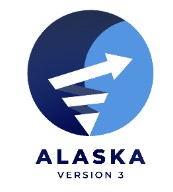Reprinted with permission from the author. Originally published in the ADN September 4, 2022.
How to create a shared approach to Alaska’s future prosperity
The draft Comprehensive Economic Development Strategy, or CEDS, for 2022-2027 is available online at https://ua-ced.org/statewide- ceds. The lead state agency is the Department of Commerce, Community, and Economic Development. The University of Alaska Center for Economic Development is facilitating the process, which began in January 2022.
The mission of the CEDS is “to create a shared approach to Alaska’s future prosperity that is locally based, regionally driven, and state connected.” Alaska needs this mission to be fulfilled. The draft CEDS offers a solid starting point, but needs three changes to fulfill its mission: linking indicators to objectives, lengthening the timeline and broadening the lens.
First, a way to track progress is needed. The measurable indicators are listed in a two-page evaluation framework that is separate from the six goals and their corresponding objectives and actions. The evaluation framework is important because what people can point to with data often gets priority. As the saying goes, “what gets measured gets managed.” While not everything that matters can be measured, measurable indicators provide a way to track and communicate progress toward stated goals and objectives. The indicators in the CEDS need to be directly linked to each goal, objective and action; each needs a measurable indicator in order to track progress.
Second, a longer timeline is needed. The draft CEDS is 2022-2027. Five years is too short to co-create and implement a statewide strategy.
For every Alaskan to have an opportunity to engage in the process — for all voices to be heard — a longer time horizon is needed. It is also beneficial to get beyond the cycles of political elections.
Fifteen years is a more feasible timeline to fulfill the CEDS mission “to create a shared approach to Alaska’s future prosperity that is locally based, regionally driven and state connected.”
Third, we need to look beyond the traditional lens of economic development to understand and move toward a new vision of Alaska’s future prosperity. The CEDS is viewed through a traditional lens of GDP, income, jobs, business competitiveness, capital investment and infrastructure. Economic growth is only one dimension, and it needs to be viewed in conjunction with social and environmental well-being to see the full picture of prosperity. To create a prosperous future, our way of life must be viewed as holistic and interconnected. An appropriate starting point is an Indigenous lens, in order to see the place we call home today from the viewpoint of the Alaskans who have lived here for 10,000 years.
In conclusion, the CEDS has an important mission “to create a shared approach to Alaska’s future prosperity that is locally based, regionally driven, and state connected.” The draft is a good starting point, but needs three things to fulfill its mission: 1. measurable indicators to be linked to specific objectives; 2. a time horizon of 15 years; and 3. a broader lens that includes social, cultural, and environmental goals rooted in Alaska Native values.
Joel Cladouhos is an entrepreneur and sustainable development activist. He lives in Anchorage.

